SUNDAY JOINT, 6-23-2024: DO THE WRIGHT THING

Hey All,
I'm 64 years old, and hope to ride many more waves before getting my celestial flip-flops—here's me, pretty much, week before last in Southern Costa Rica; of course I want to keep this show rolling—but my surfing life now is mostly spent thinking about the past, and one of the best parts of that past is recalling the families I was lucky enough to embed with over the years. The McFarlands of Manhattan Beach are near the top of the list. The beachfront mid-century house you see below is located on the Strand, between 8th and 9th, three blocks south of Manhattan Pier. (I'll interrupt before we even get started because you'll want to see this mini-clip from, I'm guessing, 1940. Do we all agree that the resin-stained Manhattan Beach Surf Club warmups are ten levels cooler than the 2024 Ralph Lauren-designed US Olympic super-WASP team uniform?)
Back to the house. It was sold five years ago and then slowly, beautifully restored (bottom photo, below), and for that I am grateful because the place wasn't big or in especially good shape, and the default move in high-end South Bay real estate—location-wise it doesn't get more high-end; sale price in 2019 was just under 12 million—is to demolish and rebuild to max out the square footage on every possible axis.

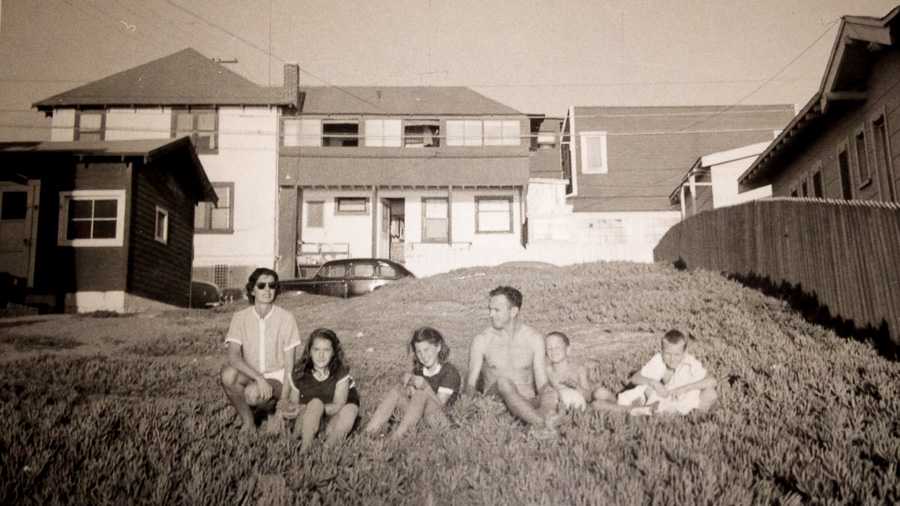

The house originally belonged to Howard McFarland. He worked at RAND Corporation, like my dad—a prestige job for the big-forehead crew, but nothing you'd get rich from. Howard bought the property (above, center), helped design the house, and likely built much of it too. That's Howard and wife Nancy sitting on the lot in 1956, and their still-growing clan, just before breaking ground.
The McFarland kids were all good surfers (and incredible volleyball players); Howard surfed too, and to keep the equipment more or less in one place he built a board room, with its own entrance, between the main house and garage. My family lived a mile off the beach, in what was called the Tree Section. I was years away from getting a car, and nimble enough in terms of getting around South Bay on a bike, board under my right arm—but the upgrade move, of course, was to keep your stick at somebody else's house on or near the beach.
Because my brother was best friends with youngest sibling, Dana McFarland, I got the call-up to the McFarland boardroom. It was an honor and a privilege, and if I didn't contribute much to the McFarland mise en scène, I didn't break anything or cause Dana any real embarrassment. Howard and Nancy were both soft-spoken but, in their own way, commanding. They were "cool" parents for sure, but didn't engage with us much—which was the style back then, of course. Parents were parents and kids were kids. In a low-key way, I think they enjoyed having us around, and we were usually allowed to hang out on the downstairs porch, which was fenced off at about waist-level and slightly elevated above the Strand, and didn't we just lord it over all passers-by. We drank enough watery domestic beer to bump the Coors stock price.
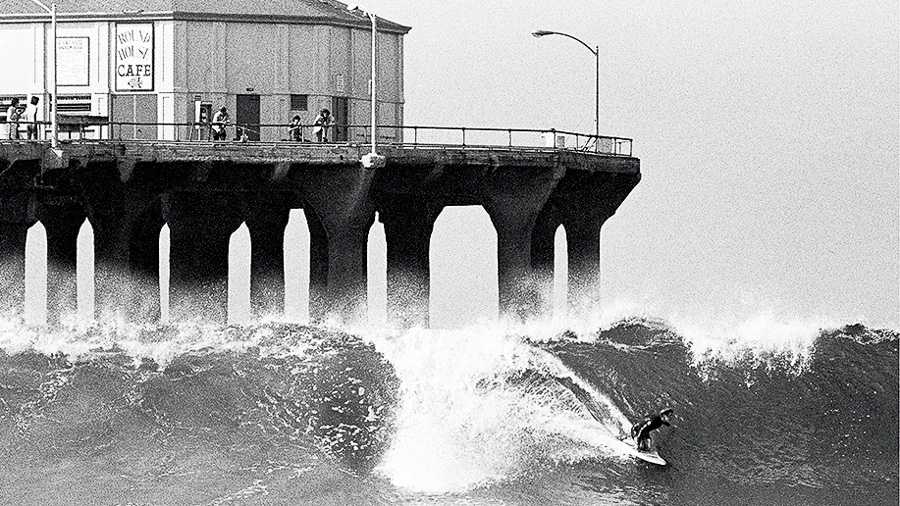
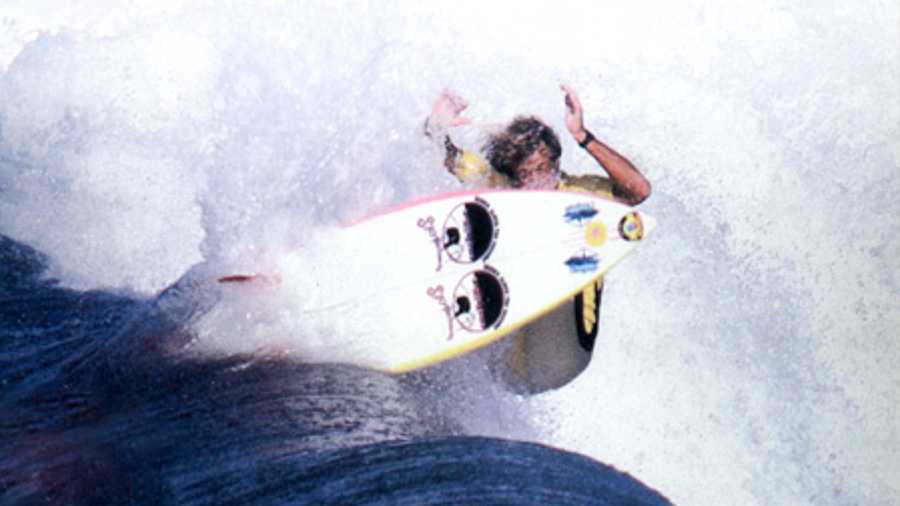
The largest and outermost social group attached to the McFarland house would gather, on sunny afternoons, around the volleyball court Howard installed just after the house was built. That's what you see in the photo above. Mira Costa High School boys and girls, surfers and volleyball players, summer of 1977—me on the far left, head down and reading because the plan was to honeypot the chicks and fascinate the bros with my discursive knowledge of Stephen King. It's almost not worth swinging the lens around to see the ocean. But I rode 100,000 middling beachbreak waves out there, like everybody else who ever lived in the area, pulled into closeout tubes whenever it was hollow and somebody was watching, and learned how to whip a frontside 360.
My happy place, in other words. All of it tied to the McFarland house.
Jump ahead a decade. Dana and his wife Nancy open Wright's, a little boutique on the corner of Highland and Manhattan Beach Boulevard, very South Bay bespoke—great clothes, beautiful space, still going strong 35 years later.
Jump ahead again. I'm neck-deep in EOS when Bruce McFarland, Dana's brother, a genius like his dad, begins updating me with progress reports on the company he and his equally genius wife Marie have cofounded, called American Wave Machines. If you've surfed a wavepool in Shizunami, or Waco, or East Rutherford, or Porto Feliz—those were built on tech originating from Bruce's XXL prefrontal cortex.
It was Bruce who emailed me a few scanned news clippings of Charlie Wright, his great-uncle and namesake of Wright's boutique, and at the risk of giving us all the bends we now U-turn back to 1925, because it turns out that Charlie Wright was the first native-born surfer in San Diego, or close to it, and for sure was the area's original surf contest promoter.
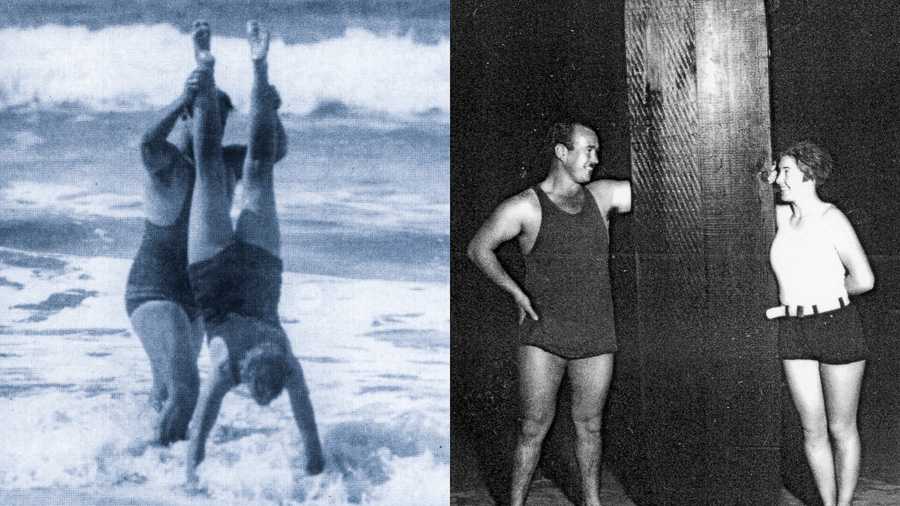
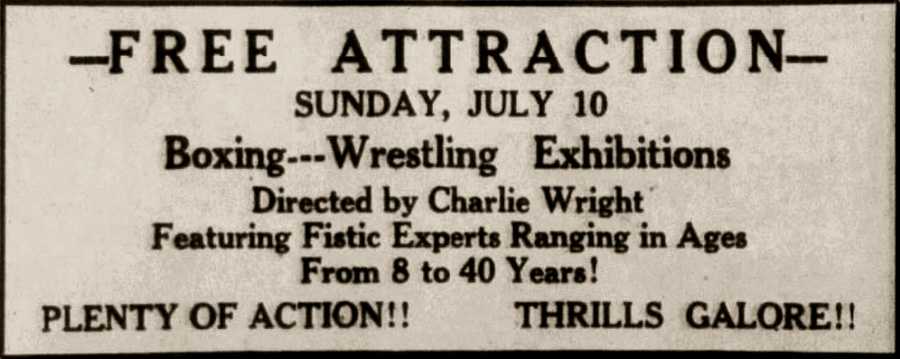
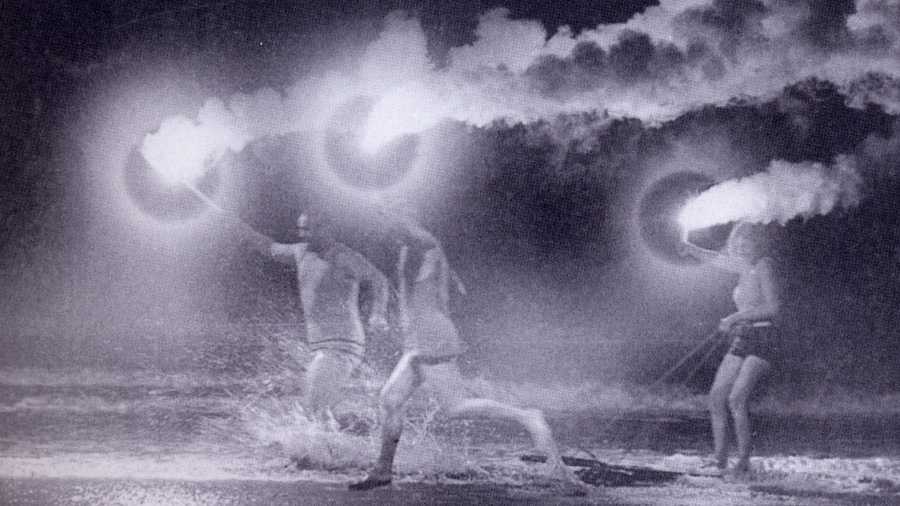
Like the McFarlands, Charlie was handsome and athletic. Very much unlike the McFarlands who, like I say, were soft-spoken and cool to the point of chilled, Charlie was loud and blustery, a keg-shaped lifeguard and stuntman with a side hustle in wrestling (under the name Masked Marvel) and wrestling promotion; the kind of man who would sprint through the ankle-deep water in Mission Beach on New Year's Eve with a flare raised overhead, while towing his plank-riding tandem partner behind him through the shallows. See above. Surf-wise, Charlie had the full laying-on of hands. When Duke Kahanamoku arrived in San Diego in 1916 for what was billed as "Hawaiian Week," he made his way to Ocean Beach, found a board (likely borrowed from new San Diego resident George Freeth), and in turn loaned the board to Wright. Charlie then banged one out for himself—a 9' 6" square-railed slab of redwood he named "Iron Tip."
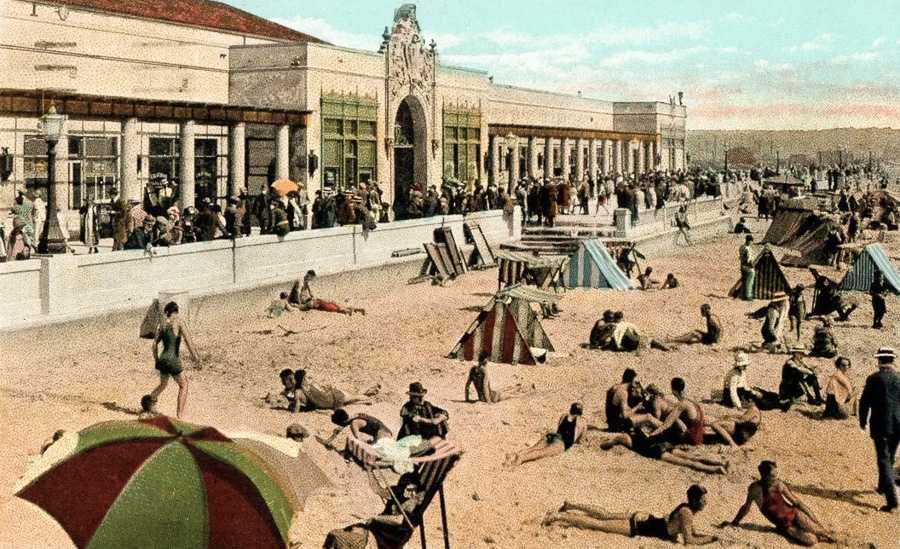
Wright loved surfing, and he loved promoting. The only thing surprising about his 1925 surf contest, which was as original and one-off as the man himself, is that he didn't do it five years earlier. From the San Diego Sun, September 6, 1925:
The first surf-board meet ever held will take place in front of the north Mission Beach bathhouse on Monday at 12:30 in the afternoon. The winner will be proclaimed Pacific coast champion and will receive a miniature gold surfboard. Silver and bronze surfboards will also be rewarded. Contestants will ride the surf in 10 different manners, one point to be given for each that is executed correctly. The various forms are: standing up, turning around, riding backward for four seconds, standing on head, sitting down, riding double down, riding double up, riding on shoulders, three on a board.
That's only nine "manners," and I leave you to wonder what this late-summer beach show looked and sounded like in practice. The punchline, of course, is that it was Wright himself, at the end of the afternoon, on the winner's podium, grinning and holding up the miniature gold surfboard.
I am, as a rule, attracted to the cool ones, like Dana and Bruce. But if Charlie had rolled up to the porch on a hot afternoon—and this isn't purely hypothetical, he died in 1984—we would gladly have given him the seat of honor and all the Coors he could drink, just let it rip, old timer!
Thanks, everybody, and see you next week.
Matt
[Photo grid, clockwise from top left: Mason Ho inside a Bruce McFarland-designed tube; a Masked Marvel wrestler; 1970s skateboarder at Marine Street, Manhattan Beach; Matt Gage hits at the 1980 Manhattan Open, with the McFarland house visible at lower left; 1960s postcard of MB Pier; Charlie Wright and young friend, Mission Beach, 1926. McFarland house, 1977, photo by Aaron Parazette. Howard and Nancy McFarland, with kids, 1956. The remodeled house, 2022. Mike Cunningham at north side Manhattan Pier, 1977, photo by John Post. Dennis Jarvis, MB Pier, 1982, photo by Steve Sakamoto. Charlie Wright and tandem partner Faye Baird, 1926. Mission Beach Bath House, 1920s.]